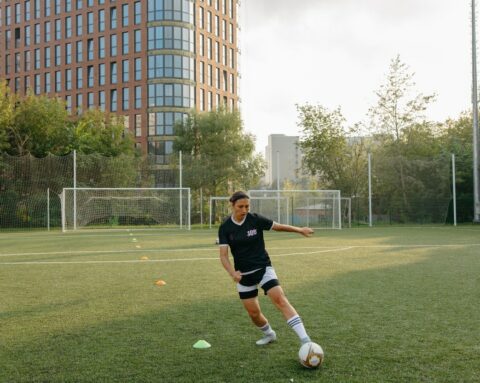The hip labrum is a ridge of cartilage that can be found around the rim of your hip joint socket. It is crucial for maintaining the stability of the socket and making it deeper. If your hip labrum is torn from the attachment it will cause clicking, catching and pain.
Causes:
Your hip labrum can tear for a variety of reasons. The cause can sometimes be attributed to a sporting injury or a fall where your hip has been under pressure in an unnatural position. Another potential cause of the tear can be repetitive trauma from the rotation of the hip. This is commonly observed in sports such as hockey, ballet, soccer or golf. It is common for athletes who experience groin pain to have a labral tear in the hip.
Symptoms:
When discussing the symptoms of a hip labral tear is is possible to experience no pain! however, most people will feel either an ache or some pain in their groin, their buttock or over the lateral hip.
You may experience the feeling of your leg clicking or catching in the hip socket when it moves. This can also be observed as if your hip is locking up. There are a few different ways in which a hip labral tear can present itself, as a result, it is important to have your injury diagnosed by your trained myotherapist.
Diagnosis:
To clinically diagnose your hip labral tear your doctor or myotherapist will use a combination of clinical signs and symptoms to help arrive at a diagnosis. It is common for an MRI to be required to gain a specific diagnosis for the injury. Contact your myotherapist as soon as possible if you believe you may have suffered a hip labral tear.
Treatment:
To effectively treat your labral injury, it is important to immediately begin by resting your hip and ensuring you avoid any activities that might aggravate it. Some simple ways to do this are too; avoid sitting with your legs crossed, avoid sitting with your knees lower than your hips and avoid sitting on the edge of your seat as this can cause the muscles that flex your hips to contract.
In phase 2 of recovering from your hip labral tear, several factors must be considered. it is crucial to restore all range of motion in the joints and ensure that your myotherapist assesses your biomechanics. Your myotherapist will ensure that your muscles are progressively strengthened and that your soft tissue muscle lengthens. Finally, your proprioception and joint positional sense must be enhanced before we can move on to phase 3.
Phase 3 of your recovery will once more be monitored and assessed through several other factors. The most important step of the recovery process will aim to ensure you can function in your everyday life through goal-focused exercises. Over time your myotherapist will ensure that your power, speed agility returns as we help to modify your return to sport through specific drills and activities.
Once phase 3 is complete you should be able to return to your activity or sport of choice.
Surgery:
A certain amount of hip labral tears may require surgery to stop the clicking and pain. If you choose to undergo this procedure you may also see an improvement in the integrity of the hip joint. This reduces future degeneration which is associated with labral tears.
During surgery, your labrum will be reattached and the torn section will be taken away. Your post-operative care and rehabilitation will be closely monitored and guided by your myotherapist who will ensure you can return to full fitness.
Book A Session Today: http://www.studioms.com.au/book-your-appointment-online/






